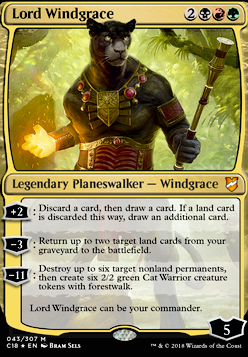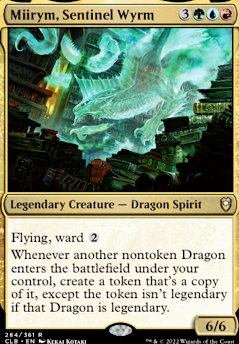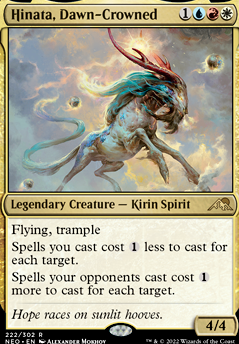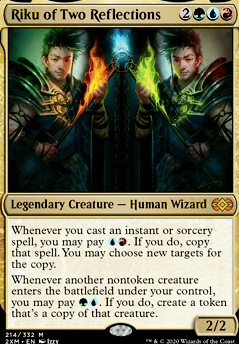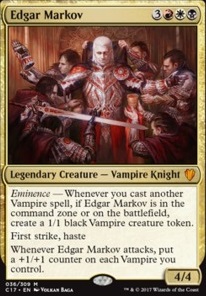Here is an MTG Burgeoning YouTube video discussing the first 12 cards added to this deck:
-
Lotus Cobra: Lotus Cobra can create an obscene amount of mana just by sitting on our side of the battlefield. Its landfall trigger is one of the most powerful in Magic: the Gathering. This deck list will include many, many fetch lands which will work double-duty in triggering Lotus Cobra's landfall ability. A fetch land comes into play, we add one mana of any color to our mana pool, we sacrifice the fetch land, search our library, put a land into play, we add one mana of any color to our mana pool. If this land is untapped, we net three mana that turn. For the purposes of foreshadowing, the next 12 cards added to this deck will only make Lotus Cobra stronger: Ways to get lands into play in volume and from everywhere. With the various ways we will be able to play lands and how frequently, Lotus Cobra can ramp us several turns ahead of our opponents.
-
Scute Swarm: Scute Swarm is a win condition. A bonkers, ludicrous, unreal win condition. Its landfall ability is extremely powerful and if left unchecked Scute Swarm can spiral out of control until the battlefield is swarming with creature tokens, leading to imminent victory. Whenever a land enters the battlefield under our control, we create a 1/1 green insect creature token. Eh. Not much to see here. HOWEVER...if we control six or more lands, then create a token that's a copy of Scute Swarm instead. We will EASILY control six or more lands. Also, as we redundantly foreshadow once more, the next 12 cards added to this deck will only make Scute Swarm stronger: Ways to get lands into play in volume and from everywhere. With the various ways we will be able to play lands and how frequently, Scute Swarm can create a plethora of creature tokens and lead us to victory.
-
Moraug, Fury of Akoum: Moraug, Fury of Akoum is a game-ender. Each creature we control gets +1/+0 for each time it has attacked this turn. Moraug, Fury of Akoum's landfall ability synergizes with its first ability magnificently, like peanut butter and jelly. Whenever a land enters the battlefield under our control, if it's our pre-combat main phase, there's an additional combat phase after this phase. At the beginning of that combat, untap all creatures you control. Each land that enters our battlefield during our pre-combat main phase nets us an additional combat phase. SCORE! After putting mulpiple lands into play and sending a swath of creatures into multiple combats, each time the power of each creature increasing by one with each subsequent combat, we should be able to overwhelm our opponents. FINISH THEM!
-
Valakut Exploration: This is a SNEAKY good enchantment from Zendikar Rising. Whenever a land enters the battlefield under our control, we exile the top card of our library. We may play that card for as long as it remains exiled. Card advantage!! Yes, we can play lands as long as we have land drops available. #WeWillHaveMultipleLandDropsAvailableEachTurn. Oh, but we're not finished yet! At the beginning of our end step, if there are cards exiled with Valakut Exploration, we put them into our graveyard and then Valakut Exploration deals that much damage to each opponent. Card advantage and...direct damage!! YAY RED! The card advantage is awesome. We should be ramping full-steam ahead, which will allow us to cast additional spells from exile with Valakut Exploration as well as play additional lands. The additional burn to our opponents is a nice bonus, particularly if there are lands heading to our graveyard at the beginning of our end step. With so many ways to get those lands out of our graveyard and into play, either directly or indirectly, our graveyard provides us with more spells to cast AND an additional land-drop outlet!
-
Omnath, Locus of Rage: Omnath, Locus of Rage creates a 5/5 red and green elemental creature token whenever a land enters the battlefield under our control. Also, this elemental has a nifty little death trigger that will Lightning Bolt any target: Whenever Omnath, Locus of Rage or another elemental we control dies, Omnath, Locus of Rage deals three damage to any target. Netting a 5/5 creature token each time a land enters the battlefield under our control is a tremendous value. Besides, we can't have a dedicated "lands matter" deck without Omnath, Locus of Rage!
-
Rampaging Baloths: More creatures! Rampaging Baloths creates a 4/4 green beast creature token whenever a land enters the battlefield under our control. These creature tokens are not as beefy as the elemental creature tokens created by Omnath, Locus of Rage, but netting a 4/4 creature token each time a land enters the battlefield under our control is a great value nonetheless.
-
Tireless Tracker: Whenever a land enters the battlefield under our control, Tireless Tracker allows us to investigate (we create a colorless Clue artifact token with ", sacrifice this artifact: Draw a card."). Whenever we sacrifice a Clue, we put a +1/+1 counter on Tireless Tracker. Since we are not playing , we do not have access to Tatyova, Benthic Druid or Aesi, Tyrant of Gyre Strait. Tireless Tracker is our best way to generate card draw from lands entering our battlefield.
-
Avenger of Zendikar: The big, bad voodoo daddy! When Avenger of Zendikar enters the battlefield, we create a 0/1 green plant creature token for each land we control. We will create A LOT of plant creature tokens. Additionally, whenever a land enters the battlefield under our control, we may put a +1/+1 counter on each plant creature we control. We will put A LOT of +1 +1 counters on our plant creature tokens. Avenger of Zendikar is a very powerful creature outside of a "lands matter" deck, and its power grows exponentially when included in a deck like this one.
-
Scapeshift: Scapeshift allows us to sacrifice any number of lands, then search our library for up to that many land cards and put them onto the battlefield tapped. This mass-landfall-triggering-enabler can be game-ending. Imagine if Moraug, Fury of Akoum is under our control with a swath of creatures. Imagine if Lotus Cobra and Valakut Exploration are paired on our board. Imagine the lands we can put onto the battlefield. Fetches? Utility lands? Additionally, Scapeshift fills our graveyard with lands which can act as an additional land-drop outlet. Scapeshift's versatility is amazing in a deck that cares about lands.
-
Crucible of Worlds: Crucible of Worlds permits us to play lands from our graveyard. ANY land. Another fetch land? Check. No problem. Scapeshift fills our graveyard with lands. Crucible of Worlds brings them back to the battlefield. Imagine the value of having additional land drops with a fetch land in the graveyard and Crucible of Worlds under our control. Play a fetch land from our graveyard, trigger multiple landfall abilities, sacrifice it, put a land from our library into play, trigger multiple landfall abilities. Play a fetch land from our graveyard, trigger multiple landfall abilities, sacrifice it, put a land from our library into play, trigger multiple landfall abilities. Play a fetch land from our graveyard, trigger multiple landfall abilities, sacrifice it, put a land from our library into play, trigger multiple landfall abilities. Play a fetch land from our graveyard, trigger multiple landfall abilities, sacrifice it, put a land from our library into play, trigger multiple landfall abilities. Lather. Rinse. Repeat. POWER.
-
Life from the Loam: Staying with our graveyard theme, Life from the Loam returns up to three target land cards from our graveyard to our hand. This sorcery also has dredge 3, so if we would draw a card, we may mill three cards instead. If we do, then we return this card from our graveyard to our hand. Cast Life from the Loam and return lands from our graveyard to our hand. Play lands. Dredge 3 Life from the Loam, mill cards from our library (lands) and return Life from the Loam to our hand. Cast Life from the Loam and return lands from our graveyard to our hand. Play lands. Dredge 3 Life from the Loam, mill cards from our library (lands) and return Life from the Loam to our hand. Cast Life from the Loam and return lands from our graveyard to our hand. Play lands. Dredge 3 Life from the Loam, mill cards from our library (lands) and return Life from the Loam to our hand. Lather. Rinse. Repeat. POWER. Life from the Loam is going to do work in this deck!
-
Ancient Greenwarden: Okay, so, yes, this exists. This creature exists. Someone decided to create a creature from a combination of Crucible of Worlds and a landfall-centric Yarok, the Desecrated and slap these abilities on the body of a 5/7 elemental with reach for . WHAT!?!! SERIOUSLY??! Thank you...? Ancient Greenwarden may prove to be the single, most powerful card in this deck list. WE DOUBLE EACH LANDFALL TRIGGER. How mind-boggling is this? Create two creature tokens by...putting a land into play. Generate two mana of any colors by...putting a land into play. Gain two additional combat phases by...putting a land into play. Put two +1 +1 counters on every plant creature token we control by...putting a land into play. Double the number of Scute Swarms twice by...putting a land into play. Ancient Greenwarden strengthens a "lands matter" deck like no other card in Magic: the Gathering's history.
And that's the way the news goes. The MTG Burgeoning community will shape the rest of the deck. Leave suggestions for the next 12 cards to be added here or in the comments section of Episode #250 (see above) from MTG Burgeoning's YouTube channel. Our next focus? Ways to get lands into play in volume and from everywhere.



